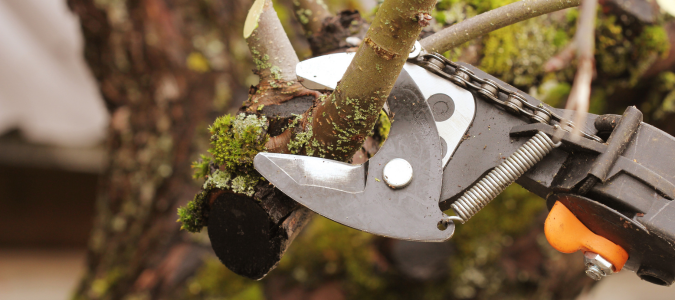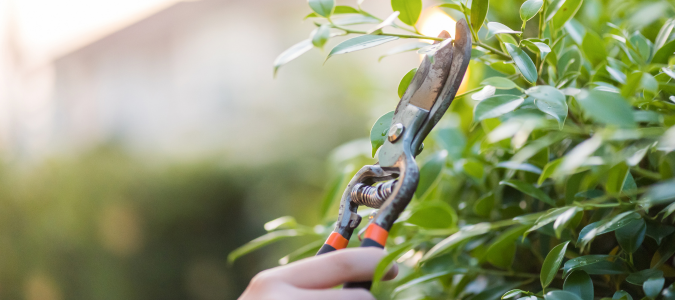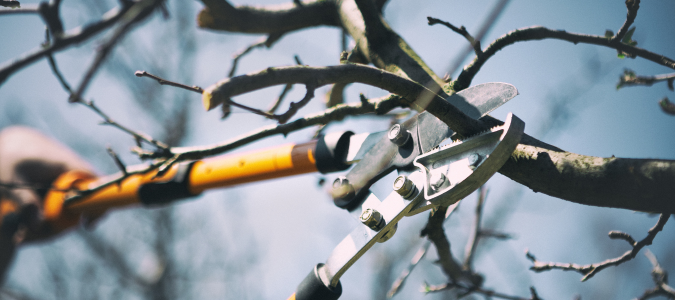If you’re growing trees on your property, you’re probably eager to give them all the TLC they need to thrive. But before you head out to your garden and start pruning, knowing how to do this is important. Pruning trees is a misunderstood chore, leading homeowners to sometimes do more harm than good. Unfortunately, incorrect pruning can lead to poor or unnatural plant growth and low flower and fruit production.
If you want lush greenery in your garden, it helps to know the best season to prune trees. However, the timing depends on the type of tree and other factors.
Here’s an in-depth guide on when to schedule pruning and other helpful tips. For the best results, let a professional arborist take over. The arborist will give your trees the proper care they deserve. They can also tell you about the difference between tree pruning and trimming.
Best Season to Prune Trees: Factors to Consider
The best season to prune trees is in the late winter, between mid-February and early March. That’s right before the new spring growth emerges.
These dormant months are generally the best for tree pruning because there’s better visibility, thanks to the lack of leaves. In addition, trees experience proper wound closure in the latter part of winter, preventing the spread of decay. Lastly, pathogens and pests are less likely to affect trees during these months.
While this rule applies to deciduous trees and most evergreens, not all types of trees benefit from late winter pruning.
Here are the best times to prune your trees according to tree type.
Deciduous Trees
Deciduous trees shed their leaves seasonally, typically in autumn. The best time to prune them is between late fall and winter while they are dormant. You’ll also have a clear view of their branches. However, some deciduous trees might lose sap in the spring if you prune them in the latter part of winter. Fortunately, this is usually harmless and will naturally heal with time.
Young Trees
You don’t usually have to prune young trees you’ve just transplanted. It’s better to wait a year before giving them their first cut. The only thing you should do in the first year is remove damaged or broken branches, being careful to leave the temporary low branches. These help protect the young trunk and don’t take nutrients from the permanent branches. You can gradually prune the temporary low branches as the tree gets older.
Newly Planted Trees
Newly planted trees, whether young or mature, need some time before pruning. Give them at least a year to grow and strengthen their root systems. Premature pruning can hamper their ability to manufacture food, stunting their overall growth. They only need corrective pruning of broken, crossed or dead branches. You can also remove competing lead branches if there are any.
Flowering Trees
The best season to prune flowering trees depends on when they bloom. The general rule is to prune spring-blooming trees right after flowering, while summer and fall-blooming ones can be cut between winter and early spring. However, you can do routine pruning of dead branches at any time of the year.
Fruit Trees
Like most other trees, the ideal pruning time for fruit trees is late winter to early spring. Pruning during this time will declutter the canopy, allow more sunlight to filter in and help produce large, healthy fruits. While you have the option to prune between July and August, severe pruning can weaken fruit trees.
When Not to Prune Trees
Whatever kind of trees you have, the worst time to prune them is between late summer and early fall. Avoid these months because trees are about to go dormant, taking nutrients from the leaves and storing them. Pruning them will encourage new growth and can hinder them from entering dormancy. They might also not have enough time to completely heal before winter hints, making them more prone to decay and disease.
When in doubt, contact a professional arborist to prune your trees. The arborist will determine what kind of trees you have in your garden and prune them according to the time and pace best for them. Professional care will prevent damage, enhance the strength and shape of your trees and improve airflow and sunlight diffusion. An arborist can also advise you on how far tree branches should be from a house.
5 Basic Rules of Pruning
Many homeowners are surprised to learn that pruning trees is a carefully scientific process. Various factors, including purpose, species, size and growth behavior, must be considered before pruning trees.
If you want to keep the trees on your property happy and healthy, follow these five basic rules of pruning.
Know the Correct Time to Prune
Don’t prune your trees whenever you feel like it. It’s crucial to prune only when your trees have entered dormancy so they’re less stressed by the ordeal. It’s also easier to make the right cuts when they’re dormant because you have better access to their limbs. Pruning them in late summer or fall will only encourage new growth that can’t survive the harsh winter.
Make the Right Cuts
When you prune your trees, your cuts should always be above a growing point. That means you can cut on top of a promising bud, side branch or main branch. You can also prune back above the soil line. What you should never do is to top a tree. Cutting off the top of a tree will leave the top branches as stumps, creating weak and unstable limbs and an unsightly tree shape.
Prioritize Problematic Branches
You don’t have to wait until dormancy to remove damaged, dead or problematic branches. Eliminate them immediately to avoid issues and keep your trees healthy. You can differentiate dead branches from live ones because they’re brittle, have no green layer beneath the bark and have brown, withered buds. It’s also essential to remove problematic branches that will choke others.
Prune Dense Growth
While bushy trees look healthy, excessively dense exterior growth prevents sunlight from filtering into the tree’s inner parts. This causes the tree to develop a thick outer shell with a dead interior. In addition, it can lead to restricted airflow, causing moisture to stay on the outer foliage, which can eventually lead to foliar disease.
Prune Regularly
It’s a good idea to have your trees pruned annually to maintain their shape, being careful not to prune more than 30% of their growth. Over-pruning destroys trees’ nutrient reserves, causing irreversible damage. If you have a massive pruning project you want to take on, it’s best to spread it out over a few years to save your trees.
If pruning sounds too technical for your DIY skills, don’t hesitate to contact a professional arborist. Thanks to their tools and expertise, they’ll have your trees looking healthier than ever.
Should You Prune Low Branches of Trees?
There shouldn’t be any hesitation in pruning low branches on trees because it poses many benefits. It improves airflow within the canopies and allows more sunlight to reach the inner parts of trees and the landscape below. It also prevents pests and diseases, enhancing overall tree health.
Not only does removing low branches enhance tree growth, but it also boosts curb appeal and property value. In addition, you’ll have more space to move around in and can soak up more sun with fewer branches in the way.
You can prune most trees’ lower branches at any time of the year. You can remove as much as 20% of the foliage, being careful not to over-prune to avoid shocking your trees. In addition, always use sharp and clean tools to make smooth cuts.
For tall trees, it’s best to clear the branches within seven feet of the ground to create overhead space for your family and guests. If there are a lot of low branches to remove, you might want to remove them over two or three years.
It’s best to let a professional arborist take over with any pruning that needs to be done. The arborist will use only the best pruning techniques so your trees remain strong and healthy.
Contact a Professional for Your Tree Pruning
Tree pruning is more technical than homeowners think. Going into it without knowledge or experience can harm your beloved trees, especially if you do it during the wrong season. If you want the trees on your property to flourish, let a professional handle the pruning. An experienced arborist will determine the best time to prune your trees based on their health and species.
ABC Can Keep Your Trees Healthy
There can be a lot involved with taking care of trees. For healthy, happy trees, contact ABC Home & Commercial Services. Our certified arborists will ensure that your trees grow strong and beautiful. Our tree services include trimming, fertilization and tree air excavation. They can trim many trees, including crape myrtle trees.



